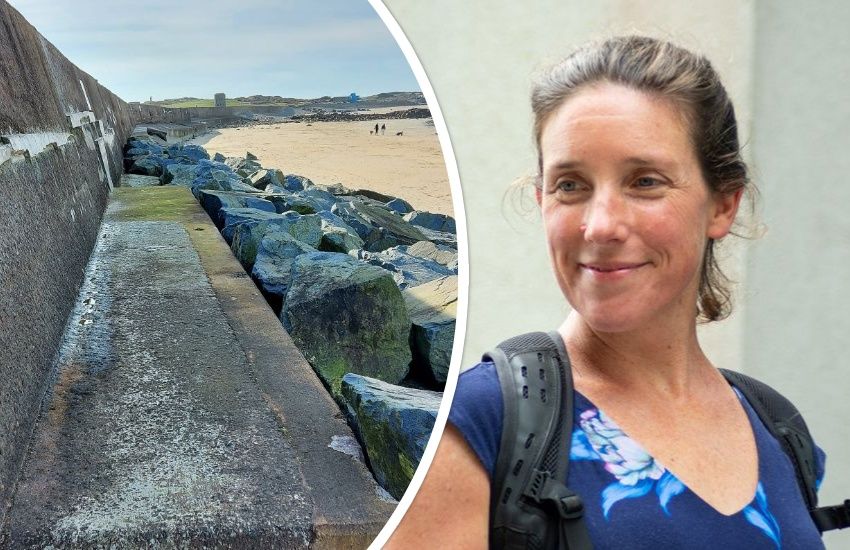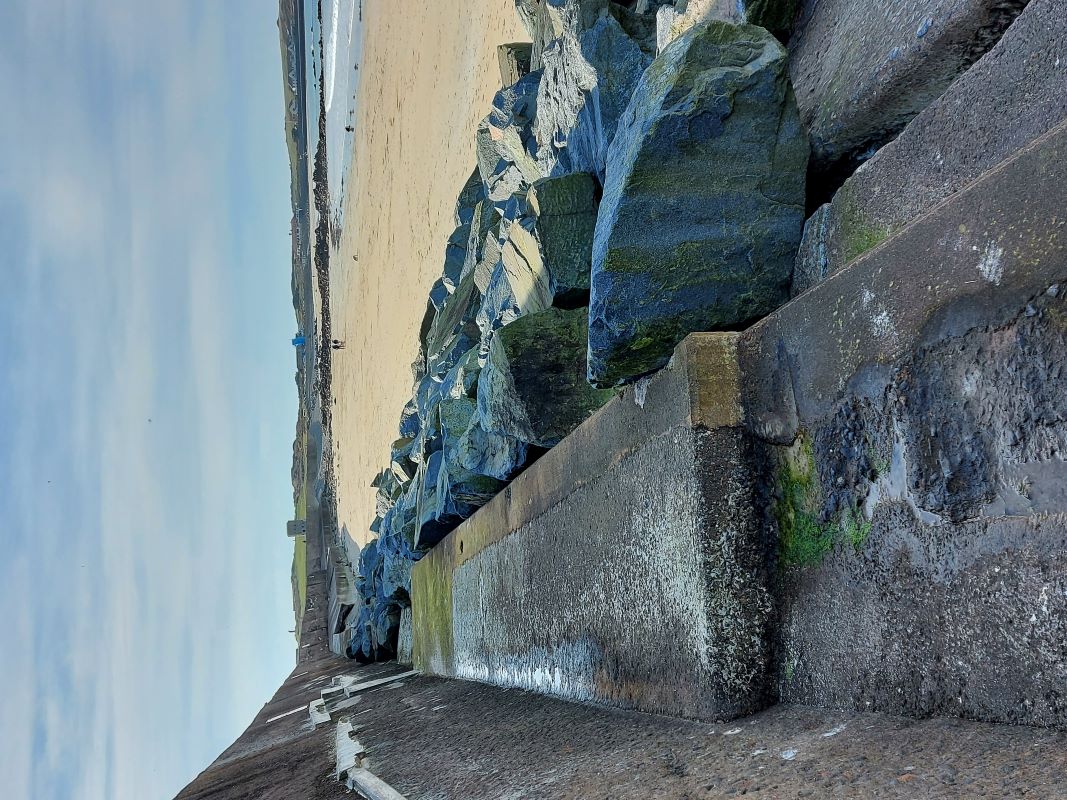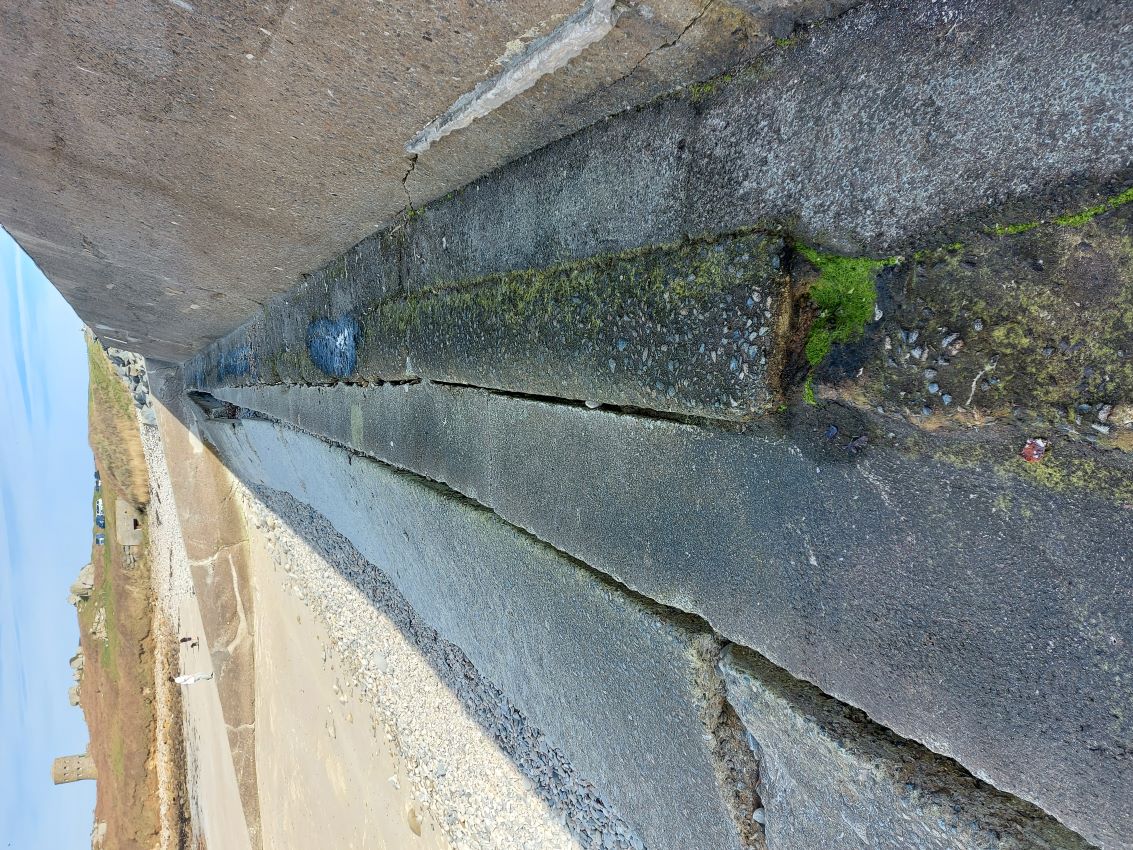


The States have agreed an eight-year plan to carry out minimal work and reactive repairs only to a 272-metre stretch of the anti-tank wall at L’Ancresse East.
The Assembly voted 26-11 this morning (28 April) in favour of proposals from the Committee for the Environment & Infrastructure to put more rock armour on the beach at the foot of the wall and, if necessary between now and 2030, pour further concrete into emerging voids to prevent a serious breach in the wall and sea damage to the land behind.
The Assembly also voted 35-2 to scrap a more extensive maintenance programme which had an estimated cost of £1million and had been agreed towards the end of the previous States’ term as part of a successful requête led by Deputy Al Brouard.
But the States have left in place previous directions for a long-term scheme to take effect after 2030 based on completely removing the damaged section of the wall and allowing what has been referred to as managed realignment of the coastline, including the gradual development of a dune-backed beach. In 2017, the cost of this scheme was estimated at £1million.

Pictured: There will now be more rock armour placed at the foot of the wall to help maintain it for at least the next eight years.
The President of the Committee for the Environment & Infrastructure, Deputy Lindsay de Sausmarez, pictured top, said the eight-year plan for minimal intervention was "a straightforward, pragmatic proposal".
"We explored a number of different options and came to the conclusion that the proposal before you today was the most appropriate," she said.
"It is an approach which remains faithful to the spirit of the Brouard requête but its cost parameters more comfortably align with current fiscal constraints.
"The main aspect of the proposed new approach is to use rock armour to reinforce the most vulnerable section of the wall at panels eight and nine followed by a reactive approach thereafter to address any breaches.
"The Committee will return to the States if further direction is needed – for example, if there is a breach of the wall which cannot be contained. But it is reasonable to expect that the work between now and 2030 can be managed from existing coastline budgets.
"As with the Brouard requête, beyond that time, the long-term solution remains managed realignment."
Deputy De Sausmarez said the proposals were "developed through constructive dialogue with the remaining [Brouard requête] requérants" and the Policy & Resources Committee. The proposals also had the support of the Vale Commons Council, which manages the commons behind the beach.

Pictured: The States have left untouched a previous long-term direction to remove the wall at the eastern end of L'Ancresse and allow what is known as managed realignment of the bay, but that will now not happen until 2030 at the earliest.
Deputy Peter Roffey made an unsuccessful appeal to the States to reject the eight-year plan and was one of 11 deputies to vote against it. But he commended the Committees for not going ahead with the more expensive maintenance programme on "this really ugly and unattractive section of wall that came to the end of its useful life in 1945".
"I heard in the opening speech [from Deputy De Sausmarez] that in 2030 the policy is managed realignment. So we’re going to spend money on rock armour and we’re going to spend money on emergency action propping up behind the wall, for the next eight years as and when, and then in eight years’ time move to managed realignment. Why the heck wait until then? If that’s what we’re going to do, why not just do it now?" asked Deputy Roffey.
"How can you love this wall? Go and look at it. It is absolutely returning to the earth. It is not a sea defence. It’s in the wrong place to be a sea defence. It’s a nonsense."
Deputy Roffey said the eight-year scheme was a classic example of a “vanity project” and criticised "trying to keep this thing up for the next eight years, spending money keeping it up, putting huge boulders where people should actually be sitting on a nice sandy beach when we know that in eight years’ time the plan is actually to do that anyway".
He urged the States not to "waste money for the next eight years and then sort it out".

Pictured: Deputies Peter Roffey and Yvonne Burford, supporters of managed realignment, voted against the eight-year plan in the States this morning.
Deputy Yvonne Burford, also speaking against the eight-year scheme, said she refused to call the structure anything other than "the L’Ancresse tank defence as it wasn’t built as a sea wall, there is no need for a wall and, even if there was, it would be in the wrong place" and added that "it won’t get any prettier with boulders shoved in front of it".
Deputy Neil Inder repeated his long-standing criticism of the States’ long-term plan for managed realignment of the bay. He said it is based on incorrect technical advice about the profile and history of the beach and provided the States with an alternative analysis which he referred to as "the facts".
He spoke strongly in support of the Committee for the Environment & Infrastructure’s latest eight-year plan.
"I’m grateful to Deputy de Sausmarez and the rest of the Committee for engaging with the requérants to find a workable solution…and hopefully putting an end to this debate for at least another eight or nine years," said Deputy Inder.

Pictured: Deputy Al Brouard (left) and Deputy Neil Inder, critics of managed realignment, backed the eight-year plan in the States this morning.
Deputy Brouard also supported the Committee’s proposals.
"I don’t agree with all of the policy letter…but I think they have done a sterling job in following the spirit of the requête, which was basically to leave the wall alone and put some rock armour in front of it where it needs it and see what happens over the next eight years. This is a pragmatic solution to a thorny problem," said Deputy Brouard.
He said he hoped that the Assembly’s successors would see that managed realignment was not the best approach and instead identify an alternative long-term solution.
Deputy Carl Meerveld agreed with the Committee’s proposal to scrap the more extensive maintenance programme agreed two years ago but felt it was still recommending too much intervention. He said he took "a practical and pragmatic perspective" and suggested that the basic policy should be to carry out no further work on the wall. He said this would amount to “natural realignment” and prove less expensive to taxpayers.
Comments
Comments on this story express the views of the commentator only, not Bailiwick Publishing. We are unable to guarantee the accuracy of any of those comments.